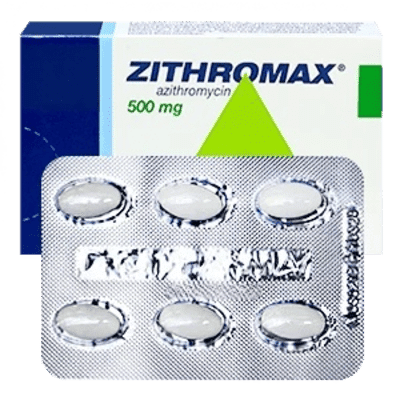The drug helped to quickly cope with a respiratory tract infection, although in the first days there was a slight discomfort in the stomach. I took the tablets after meals, and the problem was solved. An excellent remedy if used as directed.

Minocycline
Active ingredients: Minocycline- Quality products
- Support 24/7
- Fast delivery
What is it?
Minoxycycline is an antibacterial drug from the tetracycline class, which has a pronounced antimicrobial effect. Its action is based on the suppression of protein synthesis in bacterial cells, which leads to a stop in their growth and reproduction. The drug is effective against a wide range of microorganisms, including those that cause infections of the skin, respiratory and genitourinary systems.
The drug is often prescribed for the treatment of inflammatory diseases, including acne, rosacea and some systemic infections. Minoxycycline is available in capsule or tablet form and is used both as part of complex therapy and independently. Due to its ability to penetrate into various tissues of the body, it has proven its effectiveness even in chronic infections.
Composition
Minoxycycline is available in capsules or tablets, each of which contains the active substance - minoxycycline hydrochloride. This compound is responsible for the antibacterial effect of the drug, penetrating into bacterial cells and disrupting their vital functions.
In addition to the active component, the composition includes excipients that help maintain the shape and stability of the drug. These substances may include:
- Microcrystalline cellulose - ensures the stability and structure of tablets.
- Magnesium stearate - used as an antifriction agent.
- Lactose or starch - give the drugs the necessary texture and facilitate their absorption.
- Gelatin and dyes - are used in the composition of capsule shells.
The specific composition may vary slightly depending on the manufacturer, but the main thing is the effectiveness and safety of the active substance. Before use, you should always carefully read the instructions and take into account possible individual reactions to auxiliary components.
How to use?
To achieve maximum effectiveness, it is important to follow the instructions for using minoxycycline correctly. The drug is usually taken orally with plenty of water. Capsules or tablets should be taken as prescribed by your doctor, as the dosage and duration of the course depend on the nature and severity of the disease.
Directions for use:
- It is advisable to take the drug on an empty stomach 1 hour before meals or 2 hours after meals to ensure better absorption.
- Try to drink plenty of water with the medicine to reduce the risk of esophageal irritation.
- Do not lie down for 30 minutes after taking the drug to avoid possible discomfort in the stomach.
The duration of the course is determined by your doctor. It is not recommended to stop taking it ahead of time, even if the symptoms have disappeared, as this may lead to a relapse of the infection.
How does it work?
Minoxycycline acts on bacteria by inhibiting their ability to reproduce and grow. It blocks the process of protein synthesis in microbial cells, which leads to their gradual destruction. This mechanism makes the drug effective against many bacterial infections, including those that are difficult to treat with other antibiotics.
Due to its chemical structure, minoxycycline is able to penetrate deep into the bodys tissues, including the skin, respiratory system, and even joints. This is especially important in chronic or systemic infections. The drug also has an anti-inflammatory effect, which explains its effectiveness in the treatment of acne and other dermatological diseases. Its versatility and ability to work against bacteria resistant to other antibiotics make it a valuable tool in medical practice.
Indications
Minoxycycline is prescribed for the treatment of various bacterial infections, as it is effective against a wide range of microorganisms. The drug is used both in the acute stage of the disease and in chronic infections. The main indications include:
- Skin infections, such as acne, rosacea or furunculosis.
- Respiratory tract infections, including bronchitis, sinusitis and pneumonia.
- Diseases of the genitourinary system, such as urethritis or cystitis.
- Rheumatic diseases with an infectious component, such as arthritis.
- Prevention and treatment of certain forms of meningitis.
In some cases, minoxycycline may be recommended for atypical infections caused by rare microorganisms. For the correct prescription of the drug, laboratory confirmation of the pathogens sensitivity to the action of the antibiotic is necessary.
Contraindications
Minoxycycline is not suitable for all patients, as its use may be unsafe in some cases. Before starting treatment, it is important to familiarize yourself with the contraindications to avoid possible complications. The drug is contraindicated in the following situations:
- Hypersensitivity to minoxycycline or other tetracycline antibiotics.
- Pregnancy and breastfeeding, as the drug may affect the development of bone tissue in the fetus or infant.
- Children under 8 years of age due to the risk of tooth staining and slow bone growth.
- Severe liver or kidney dysfunction, as the drug is excreted through these organs.
- Conditions associated with increased photosensitivity of the skin, as minoxycycline may enhance this effect.
The drug should be used with caution in patients taking other medications that may interact with minoxycycline. A doctors consultation is essential to select a safe treatment regimen.
Side effects
Like any antibiotic, minoxycycline can cause side effects that should be considered before starting therapy. Most of them go away on their own after completing treatment, but some may require a doctors consultation. Among the most common reactions:
- Gastrointestinal upsets, including nausea, vomiting, or diarrhea.
- Increased sensitivity of the skin to sunlight, which may lead to sunburn.
- Headaches or dizziness, especially in the first days of treatment.
- Discoloration of the teeth or mucous membranes with prolonged use.
- Allergic reactions, such as skin rash, itching, or swelling.
Rarely, serious side effects occur, such as liver dysfunction, changes in blood counts, or pseudomembranous colitis. If any unusual symptoms occur or the condition worsens, you should immediately consult a doctor.
Frequently asked questions
Minocycline Reviews and Experiences
Treated chronic bronchitis with minoxycycline. The result was impressive: the condition stabilized on the third day. The only downside was that the skin became more sensitive to the sun, so I had to use sunscreen.
Just a week after starting treatment with minoxycycline, I noticed a significant improvement in my skin condition. Acne became significantly less, and the inflammation almost disappeared. There were no side effects, but I strictly followed the doctors recommendations.









